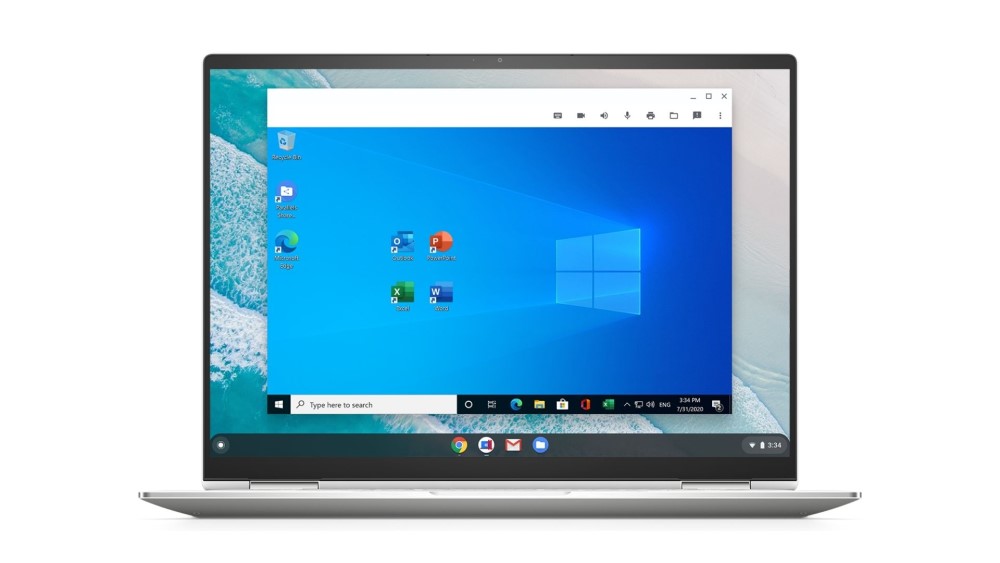
- #Parallels chromebook full
- #Parallels chromebook windows 10
- #Parallels chromebook pro
- #Parallels chromebook license
However, as I mentioned in a previous article, legacy apps are not the future of Chrome OS and it seems the Chrome OS team echoes my sentiment. One of the biggest obstacles for companies large and small making the move to the cloud is accessing legacy software.

This all sounds great and honestly, it is an ingenious move on Google’s part. Core i5 or i7 and 8GB/16GB of RAM are going the be the specs found on Chromebooks that ship with Parallels and these will likely come directly through Google’s Chrome Enterprise Partners. As you’d imagine, running Windows on Chrome OS will require hardware that’s on the premium end of the spectrum.

Additionally, Chrome OS will eventually be able to recognize certain Windows file types in order to call upon the Parallels platform to open the file with the appropriate Windows application.
#Parallels chromebook full
Misty goes on to say that, in the future, users may have the ability to run specific Windows applications without the need for the full Windows desktop. While this makes it sound as if Parallels is going to be running a virtual machine, PluginVm is actually just the handler for the other operating system which is referred to as the “GuestOS.” In this case, that guest would be Windows. That said, the Chromium repository is full of commits containing references to Parallels and the new PluginVm. How, exactly, Parallels is running Windows side-by-side with Chrome OS is still somewhat of a mystery as Mistry points out that this is not the same thing as the dual-boot experiments developers were working on with what we new as project Campfire. As we theorized, this project is intended to be a stop-gap for companies that Google is assisting in the transition over to the Chrome OS ecosystem. The initial phase of the Parallels and Chrome OS partnership will boot a full copy of Windows beside the existing Chrome operating system. This week, Chrome OS group product manager Cyrus Mistry sat down with The Verge to discuss more details on the project including more on the how and why Google is implementing this upcoming feature. At that time, details were sparse on exactly how the project would work or what Windows would look like on Chromebooks. The only requirement was the earliest possiblePublication time.A month and a half ago, Google announced a partnership with Parallels that will bring official support for Windows applications on Chrome OS. It is not yet known whether and when the offer will also be available outside of Enterprise Chromebooks.ĬomputerBase has received information about this article from Parallels under NDA. A one-month test version for five devices is also available on the website.
#Parallels chromebook license
A single license costs 59.99 euros per year, with volume discounts available for companies. Parallels Desktop for Chromebook Enterprise is available as a localized version in Portuguese, Chinese, Czech, English, French, German, Italian, Japanese, Korean, Polish, Russian, and Spanish available.

#Parallels chromebook pro
Parallels names the HP Elite c1030 Chromebook Enterprise and Pro c640 Chromebook Enterprise, Google Pixelbook and Pixelbook Go, the Acer Chromebook Spin 713 and Spin 13, the Dell Latitude 5300 2-in-1 Chromebook Enterprise and 5400 Chromebook Enterprise as recommended devices,the Lenovo Yoga C630 Chromebook and the Asus Chromebook Flip C436FA.
#Parallels chromebook windows 10
Enterprise customers can use their existing Windows 10 licenses. A minimum of 128 GB SSD is recommended as main memory. Fast CPU and 16 GB RAM recommendedĪs system requirements for the Chromebooks, Parallels recommends models with an Intel Core i5 or Core i7 processor and 16 gigabytes of RAM. Windows uses the Chrome OS network connection so that existing VPN connections can still be used.


 0 kommentar(er)
0 kommentar(er)
